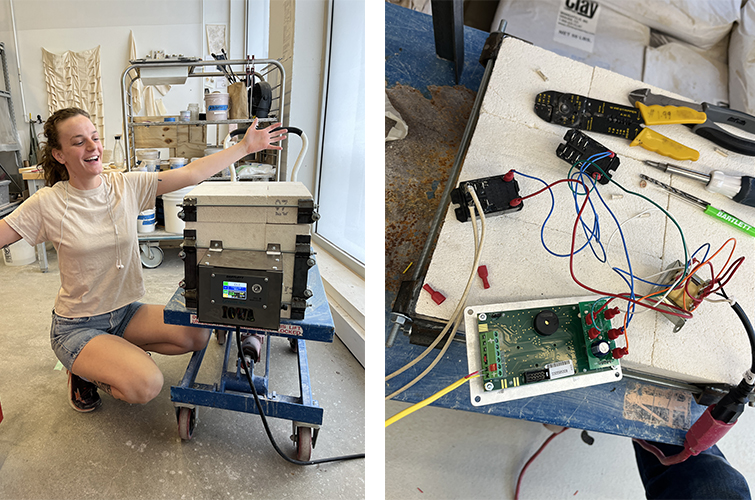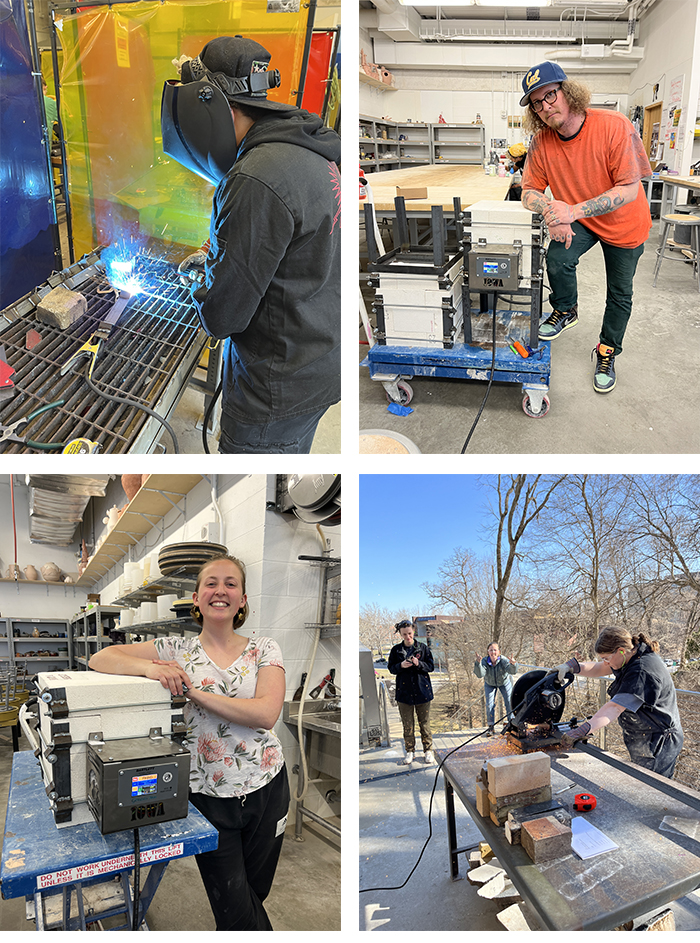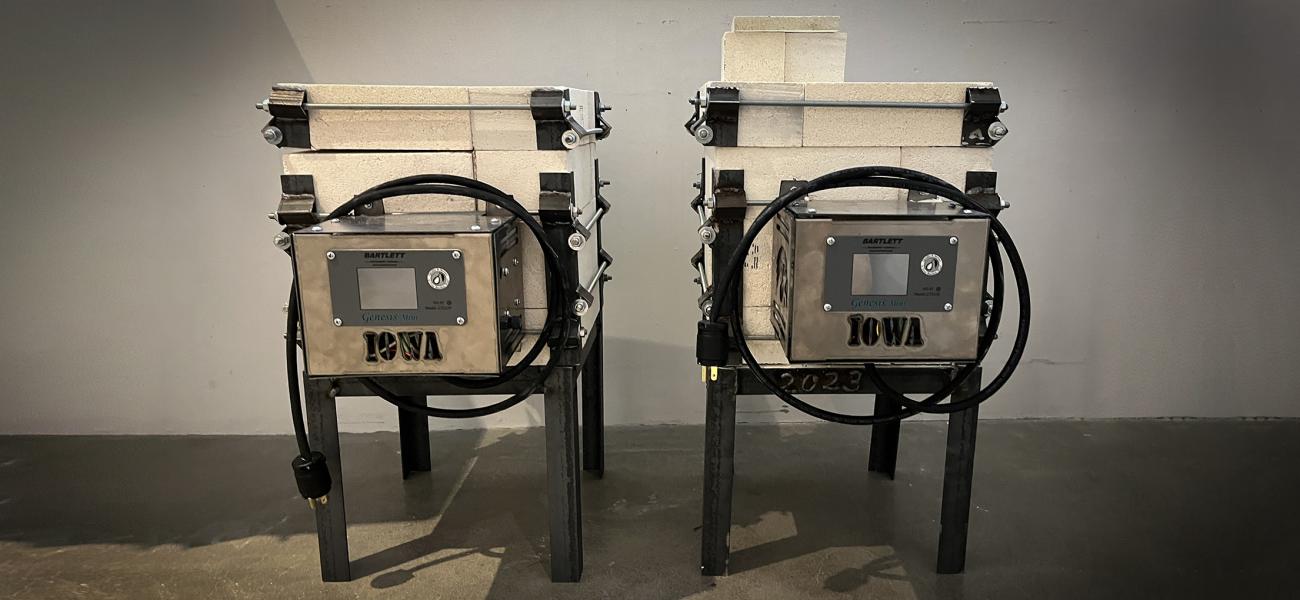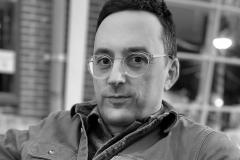Change Agent
A kiln is a site of radical transformation, a constructed crucible that persuades its contents into new states and identities. Kilns have transformed my work from fabricated to finished states and from in-process experiments into objects that provide my livelihood, either as a gallery commodity or as a grist for the academic CV. Kilns have changed my hands, my brain, my relationships, and my understanding of what is possible both in theory and in practice in my life. I can think of a few more radical devices, and none have mattered as much in my artistic experience.
As a university faculty member, it occurs to me that what’s typical in terms of student experience with kilns has changed in my twenty-five-plus years working with clay. When I became serious about ceramics, it was understood (at least to me) that one needed to not only understand how to make ceramic artwork of high quality and artistic relevance but also that welding, basic masonry, carpentry skills, and plumbing and electrical knowledge were all needed for success. For better or worse, this knowledge seems less present in the student experience in 2025.
I have benefited from the experience and understanding I gained regarding kilns in my education, but I also appreciate that the time I spent on this knowledge came at the cost of the time I might have spent considering larger themes in my own work. I was critical of others during my education who were more focused on the technical aspects of their process, or the studio, rather than the conceptual, as my thinking at the time (pre-2010) was that ceramics had been relegated to lesser status often due to the discipline’s unwillingness to step out of its internal process-heavy dialog into contemporary critical discourse present in the art world at large. I don’t feel this way anymore, partly because ceramics has made great strides in its reach and because I’ve come to feel strongly that broad knowledge of the entirety of the ceramics process is important to preserve. I now see the dwindling of once-common knowledge in our field, at least in part as the result of conceptually dominant trends in ceramics and advancements in automation in our kilns and studios, particularly in our academic institutions.
After a lingering sense that I should work to better equip students with some of this technical knowledge and being in the fortunate position to program the ceramics curriculum at The University of Iowa School of Art, Art History, and Design, where I teach, I decided to revive our long-dormant kiln building class in the spring of 2023. Iowa has a long history as a process and materials-rich academic ceramics program, and previous incarnations of this course often tore down and rebuilt various wood and gas kilns. Our current studio and kilns are all relatively new and in exceptional condition, so a large communal build wasn’t needed at this moment, and so I needed to find other building projects for the class. This caused me to rethink where my most relevant learning experiences began with regard to kilns.
In 2001, I was a post-baccalaureate student at the Ohio State University. The highly skilled (and deeply patient) Paul Simon, the studio technician then (and still!), taught a kiln-building class that was distinct from any I had encountered before or since, in that each student built their own electric test kiln during the course. Though less than a cubic foot in internal volume, these kilns were designed so that they utilized principles common in larger builds, such as a welded steel angle iron frame and stand, thread rod tension supported walls and lids, and elements that we coiled ourselves in the course. The kilns were controlled by a rheostat dial controller, which was still common at the time, and could be plugged into a fifteen-amp household outlet. I learned to weld in this class, as well as use an oxy-acetylene torch, steel cutoff saws, and I became familiar with the basics of masonry and refractory materials relevant to the project. Paul taught us about gas and atmospheric kiln design, gas safety systems, and had us each design a hypothetical larger kiln as a project in the course. The approachability of this learning experience for me was transformative in that I didn’t need to take on a massive task involving thousands of dollars and infrastructure to have a kiln-building experience. As often happens, the students in the course also became a community, and I had the good fortune of meeting my spouse-to-be, Heidi McKay Casto, in this class, who is also a ceramic artist and professor (and who to this day still welds better than me).

The experience with Paul Simon at Ohio State gave me the confidence to embark on larger kiln-building projects, and when eventually, in 2004, Heidi and I purchased a house and acreage in Southwest Ohio, we spent a year building wood and gas kilns with my dad, who diligently made the hour and a half drive each way on the weekends to assist. These kilns were my first attempts at larger construction projects, and in the twenty or so years since, I’ve come to understand that their purpose in my artistic journey is both symbolic and practical. I used these kilns to fire the work that led me to graduate school, but I also found them to be the vehicles for a unique type of self-confidence – one that comes from understanding the mechanics of the ceramic process at a deep level. I learned invaluable lessons from having to figure out how to get propane to gas burners, how to get a wood kiln to temperature, and how to acquire materials for all of it on a shoestring budget. This experience bonded my wife, Heidi, and me through our shared labor in the early years of our marriage, and it remains one of my favorite times working with my father.
It occurs to me that kilns are a unique feature of many artistic processes – painters don’t need extensive mechanical knowledge to complete their work, for example. To build a kiln is to invest time, energy, money, and learning in the physical production of our work, and because of the scale of the endeavor, it also usually means one does this labor in community with others. To me, this is the crux of ceramics and a large reason why our field persists as the weird and wonderful place it is; often, we must do our work together, finding friends, relationships, and shared sentiments along the way. A kiln-building project is the perfect site for this exchange; the work is grueling and consequential but also genuinely rewarding and doable, provided a person has the energy, willpower, and willingness to ask others for help.
With this in mind as motivation and jumping forward to our kiln-building class at Iowa, I began by considering what it would mean to our students to create an experience like the one I had at Ohio State. Our electric kilns in Iowa are all computer-controlled, and the same is true for all seven of our gas kilns, which run on PCs that are programmed to control the atmosphere and firing duration. I wondered if our students would sign up for the course or if this kind of knowledge was gradually becoming irrelevant, given technological advances in our studios. Enrollment is key in any offering we add to our program, and having the course fill was critical for success on a departmental level.
The actual build of the kilns seemed feasible in our facility, and the tools required were all readily available. After some informal conversations with grads and BFA majors, I found there to be interest in the course, and the reward for students of an electric kiln to take home at the end of the class was clearly an incentive that seemed desirable for them. We did initial materials cost estimates and feasibility studies, and our ceramics studio specialist/technician, Benj Upchurch, and I began planning the course and materials requirements. Thankfully, Benj also recalled in the planning stages that Bartlett Instruments, maker of the bulk of electric kiln controllers, happened to be located in Fort Madison, Iowa, about an hour away. We thought we might reach out to Bartlett for advice about options for controllers for the student kilns and were incredibly humbled by their generous offer to donate all of the controllers, thermocouples, thermocouple wires, and relays needed for the student kilns and partner with us on the project. Benj and I were able to tour their manufacturing facility with Dave Bartlett and technician/engineer Evan Kuhljurgen, who each gave us valuable technical support and advice throughout the build. I checked in with Paul Simon for advice about his experience teaching a similar project over the years at Ohio State, and I also had help from our digital fabrication studio specialist/technician, Billy Cho, who helped us design and cut control boxes and our sculpture studio specialist, Tony Sutowski, who graciously offered assistance with supervision of students welding and cutting the steel used in the kilns.

What followed was one of my favorite teaching experiences. Fourteen students built kilns that followed Paul Simon’s original design, each requiring nineteen K23 soft bricks, steel for a welded angle iron stand and bracing, elements we cut and coiled to fit for each kiln, custom in-house CNC plasma cut control boxes (complete with Hawkeye logos), and a Bartlett Mini-Genesis controller. Because of the donated controllers, thermocouples, thermocouple wires, and relays from Bartlett, the cost to students in terms of lab fees was under $200 for a working computer-controlled test kiln they could take with them at the end of the course. The finished kilns reach cone 6 in three hours on a fifteen-amp circuit and should provide the students with years of use. All construction was done by the students in our facilities, including cutting and channeling bricks for elements, coiling the elements, and all of the electrical work, which we supervised and tested before use. We were also advised to have students sign a waiver stipulating that the kilns would be tested and reviewed by a licensed electrician prior to use off campus.
Though all of these ceramics students were used to hands-on learning, many of the students in the group came to life in this course. They seemed hungry for an experience where they could build things and get to use what had been unfamiliar and often scary tools such as MIG welders and metal cutting equipment. Rarely have I seen such a completely motivated group, showing up to class early and staying late and anxious to find ways to excel with their efforts. The confidence and excitement of students grew throughout the course and were palpable as they completed their working kilns on time for the end of the semester.
It was clear to me that this project gave these students a new knowledge foundation and awakened in many of them a willingness to approach experiences such as this one. Course reviews from students were overwhelmingly positive, with many indicating that it was their favorite course of their college experience, often because of the ability to engage directly with the kiln construction process. I was left with a sense that students are still quite hungry for the familiarity that an intensive hands-on experience such as this provides and that, in many ways for them, the course was a welcomed rarity in their otherwise digital and screen-heavy educational lives. I’m proud that we can offer this class at Iowa and that our university supports and prioritizes learning of this kind in the expanded view of what the studio classroom can and should entail.
This spring, we are offering the second version of this course, with a few minor improvements and the same goals and outcomes. Bartlett will again partner with us and provide controllers and additional parts, and we are tremendously thankful for their support. We plan to include the course as a regular rotating offering in our curriculum every two to three years so that the bulk of our majors and graduate students benefit from it. It’s our desire in ceramics at Iowa that the tradition of deep material knowledge in our medium is preserved and nurtured and that our students enter the world empowered to build and design their own equipment when required to fit their work.
I’m also hopeful that other institutions of learning will feature courses of this kind so that students of ceramics might have greater access to this knowledge and so that those of us who want to can continue to be as self-sufficient as possible, even in this era of automated firings. My hope is that courses like this one can offer students an amplified connection between our work and how we make it, and I’m happy to help other educators consider how they could offer similar experiences.


